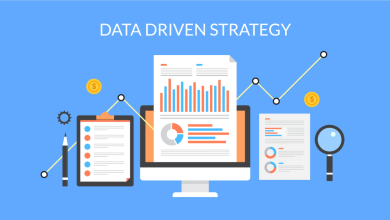
In today’s rapidly evolving business landscape, the demand for robust and scalable innovation is more urgent than ever. Despite the widespread adoption of frameworks like Design Thinking and the rise of sophisticated innovation management platforms, many organizations still struggle to generate high-impact, scalable outcomes. Agential Innovation offers a transformative alternative by leveraging next-generation, AI-native conversational and voice-based tools. This approach provides a powerful new pathway for organizations to disrupt entrenched norms and elevate their problem-solving capabilities.
The Current Innovation Paradigm
Organizations across industries have long embraced structured innovation frameworks to maintain competitiveness. Techniques such as Design Thinking prioritize empathy, ideation, and iterative prototyping, reshaping how teams tackle complex challenges. Brainstorming remains a staple method for generating rapid-fire ideas across teams. However, despite the popularity of these approaches, a persistent gap remains between leaders’ intent and their ability to drive impactful, scalable innovation.
Surveys show that 80–90% of organizational leaders identify innovation as a top priority. Yet, translating this aspiration into real, repeatable outcomes continues to elude most. This misalignment between recognition and execution highlights a deeper, systemic issue in how innovation is practiced. It calls for a fundamental reexamination of the current paradigms guiding organizational innovation efforts.
Limitations of Traditional Frameworks
While traditional innovation methods offer structure and clarity, they often fall short in addressing the complexity of modern business environments. Design Thinking, for instance, can unintentionally lead to groupthink or overemphasize incremental improvements at the expense of disruptive ideas. Brainstorming sessions, though effective in idea generation, frequently lack the mechanisms to refine, prioritize, and action those ideas meaningfully. The core issue is not the frameworks themselves, but the inconsistency in how they’re deployed and scaled across organizations.
Execution breakdowns often result from a lack of shared understanding, insufficient tool integration, or the inability to adapt methodologies to specific contexts. These challenges make it difficult for innovation initiatives to gain traction beyond isolated teams or pilot projects. As a result, many organizations plateau, stuck in a cycle of ideation without impact. What’s needed is a more adaptive, intelligent system that can bridge this gap and elevate innovation beyond the workshop.
The Advent of Agential Innovation
Agential Innovation represents a true shift in how organizations can discover, frame, and act on opportunities. Unlike static platforms, these AI-native systems function as dynamic partners in the innovation journey – guiding, refining, and enhancing human creativity. The approach blends conversational interfaces with the power of decision-making algorithms, moving beyond the storage of ideas to real-time, interactive problem-solving. It’s not just about collecting insights; it’s about transforming those insights into structured action.
This evolution aligns with the broader trajectory of agent-based systems. We are currently in the stage of AI evolution, where complex tasks are decomposed into simpler components and assigned to specialized agents. In the next phase, we simply provide a goal, and the AI system autonomously generates the necessary agents, defines their tasks, and orchestrates the entire process to achieve that objective – embodying a form of emergent coordination and strategy that goes far beyond today’s automation.
How Agential Innovation Works
At the heart of Agential Innovation is a structured yet flexible flow that enhances human problem-solving through contextual intelligence. Step one is Input and Problem Framing, where users describe their challenge in their own words. Natural Language Processing (NLP) identifies key themes and distills actionable insights from the ambiguity. This translation from unstructured input to structured intelligence is the foundation for effective intervention.
Step two is Outcome Clarification, where the platform prompts users to define their end goal – whether it’s a strategy, a new product idea, or a tactical improvement. This ensures alignment between innovation efforts and strategic intent. Step three is Tool Selection, where the system selects the most suitable innovation methodology based on the data and desired outcome. Finally, Guided Delivery allows users to choose how involved they want to be, from zero guidance to hands-on support throughout the process (humans as agents contributing to AI-led workstreams).
Implications and Organizational Benefits
Agential Innovation shifts the innovation narrative from reactive ideation to proactive transformation. Its user-centered design, powered by adaptive AI, allows organizations to deploy innovation processes at scale without sacrificing customization. The benefits are broad and measurable: scalability, speed, adaptability, and impact. By automating tool selection and refining inputs in real-time, organizations can embed innovation across teams and functions more effectively.
Scalability is achieved through repeatable processes that can be adapted to different teams while retaining the creativity of individual contributions. Efficiency improves as the platform reduces the time needed to move from problem identification to actionable insight. Customizability allows each organization to match the platform to their culture – whether highly structured or more fluid and autonomous. Most importantly, outcomes are elevated, moving beyond incrementalism toward transformative breakthroughs that redefine competitive positioning.
Concluding Thoughts
Agential Innovation is not just another tool – it’s a paradigmatic shift in how innovation can and should be done. By merging the intuitive nature of conversation with the rigor of high-capacity innovation models, it creates a system that is both scalable and deeply human-centered. As organizations navigate an increasingly volatile and complex landscape, adopting such approaches will be critical to leading rather than reacting to change.




